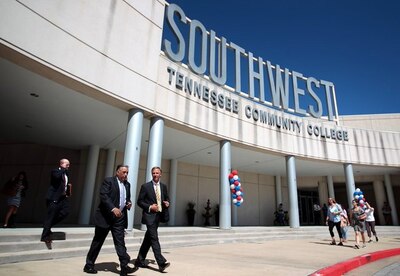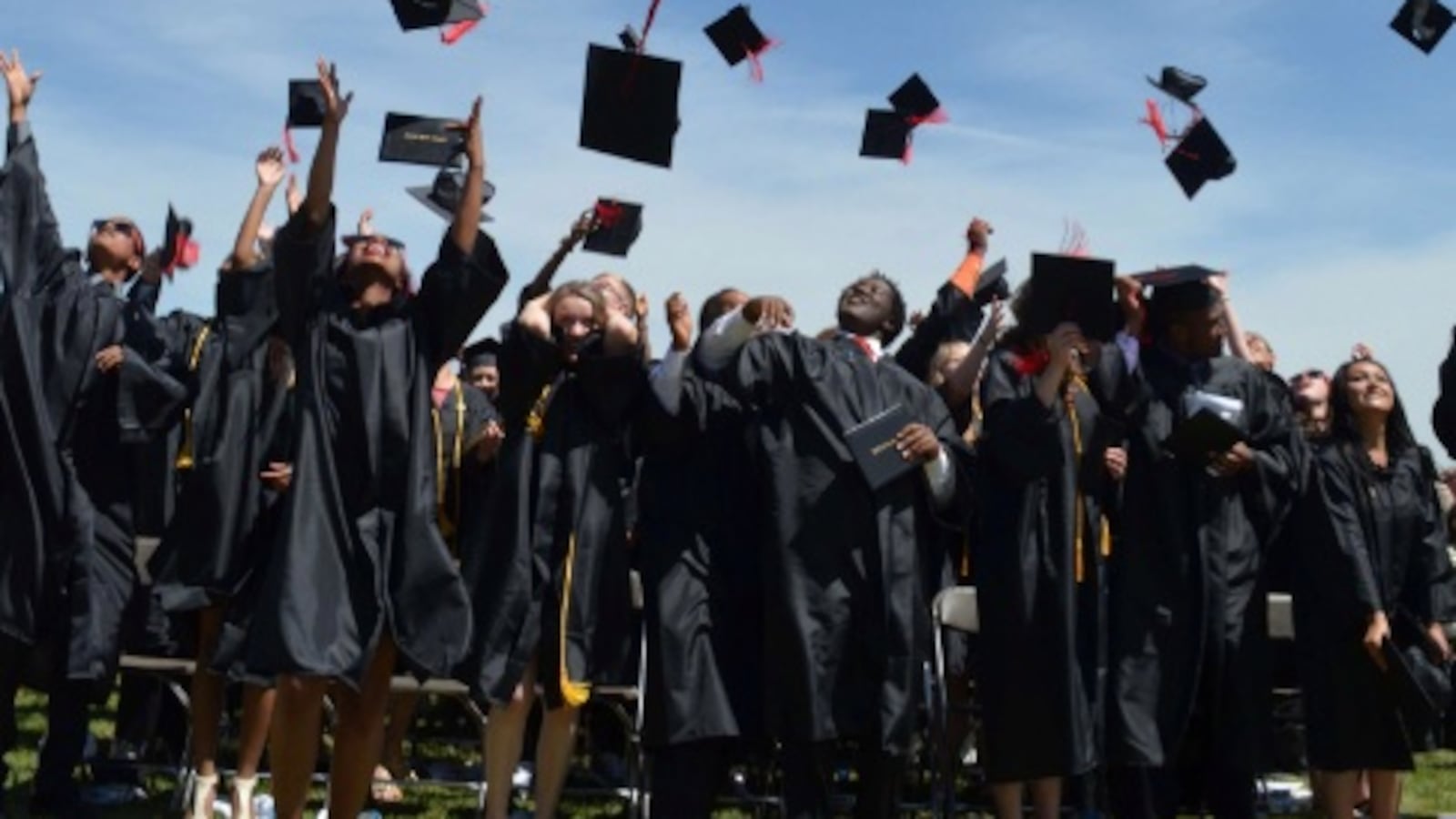Just over half of 2016 graduates from Shelby County Schools went on to some sort of college training, according to a new report spotlighting whether Memphis students are preparing for the work of the future.
In all, 56 percent of the district’s 6,905 graduates enrolled in post-secondary education, compared to 63 percent statewide. And the percentage of students going on to community college — a big push under the state’s free tuition initiative known as Tennessee Promise — was 9 percentage points lower than the state’s average.
Here’s the breakdown for Shelby County Schools:
- 38 percent went on to a four-year college or university (compared to 35 percent statewide);
- 16 percent went to community college (statewide was 25 percent);
- 1 percent went to a technical college (statewide was 3 percent)
The data was shared by the Tennessee Department of Education in its first-ever district-level reports on where students are going after graduating from high school. The reports were distributed recently as part of the state’s Drive to 55 initiative to equip 55 percent of Tennesseans with a post-secondary degree or certificate by 2025. Currently, that number stands at 40 percent.
Scroll to the bottom for the full reports acquired by Chalkbeat for Shelby County Schools, the Achievement School District, and Metropolitan Nashville Public Schools.
“This was actually pretty revolutionary – it was not something that districts necessarily ever knew, or at least not in any comprehensive, data-driven way,” said spokeswoman Chandler Hopper of the department’s new reports.
“We think this data can help districts and the state learn more about how to better support students on their journey to post-secondary, particularly in targeting support for key groups of students, and how to better partner with higher education institutions so that ultimately students are successful.”
The information is a welcome resource for Terrence Brown, a former principal who recently became director of career and technical education for Shelby County Schools. Brown called the data “surprising,” especially that only 1 percent of 2016 graduates went on to technical college.
In his new role, Brown is helping to develop the district’s new academic plan with a focus on career readiness.
“We track (students) until the day (they) graduate, and after that it becomes a matter of state tracking,” Brown said. “So, this data is helpful. … We need to make sure students first of all have a good plan and vision for where their best skill set lies and start to put in pipelines early for them. We can use (the data) to backmap and inform how we do this.”
The percentages for post-secondary enrollment were lower for the Achievement School District, which seeks to turn around the state’s lowest-performing schools. In all, just over 40 percent of 2016 ASD grads went on to college training, up from 31 percent in 2015. (The report for the state-run district is based on data from only two of its four Memphis high schools, since the Pathways alternative schools did not have enough students to graduate, according to state officials.)
For the 227 graduates of Fairley and Martin Luther King Preparatory high schools:
- 29 percent went to a four-year college or university;
- 11 percent went to community college;
- 1 percent went to technical college
“(The report is the) first time we’re seeing a comprehensive and contextualized set of results about post-secondary opportunities in Memphis,” said Sean Thibault, a spokesman for Green Dot Public Schools, which operates Fairley as a charter school.
Most of Fairley’s students are considered economically disadvantaged, and Thibault noted that the school outpaced the state average for students in that category. “We are proud of the rate at which our graduates are heading to four-year universities,” he said.

For both Shelby County Schools and the ASD, the most popular in-state option was Southwest Tennessee Community College in Memphis. The reports also break down the districts’ graduates by individual high school, ACT score, subgroup and opportunities for early credit, such as Advanced Placement courses or dual enrollment.
The district-level reports come on the heels of this year’s statewide report on bridging the gap between high school and college. It was based on months of interviews with high school students who said they aren’t receiving adequate resources or guidance to set them on a path to college or career.
That report recommended more support for high school guidance counselors, as well as ensuring that more schools have college credit-bearing courses like dual enrollment or advanced placement classes, or have vocational programs that fit with industry needs.
District-level reports are below:

